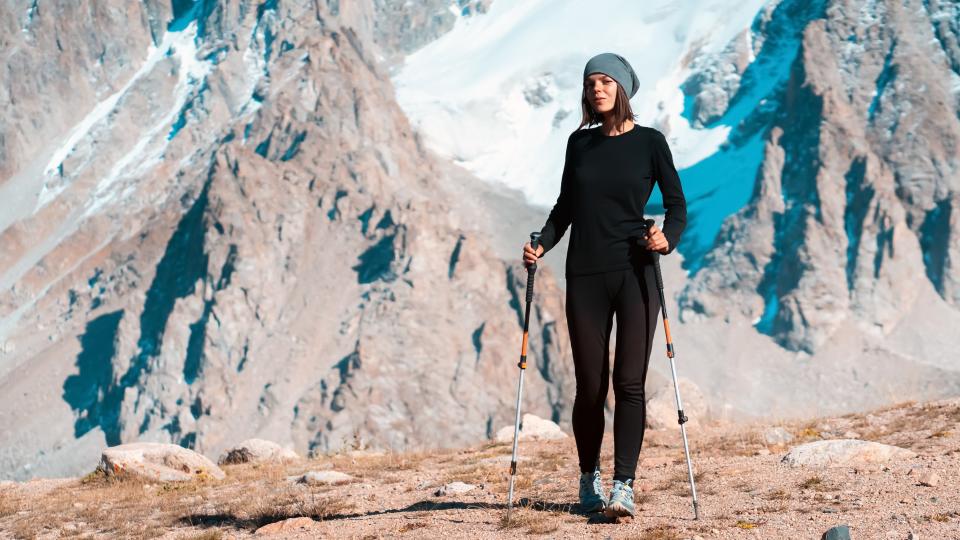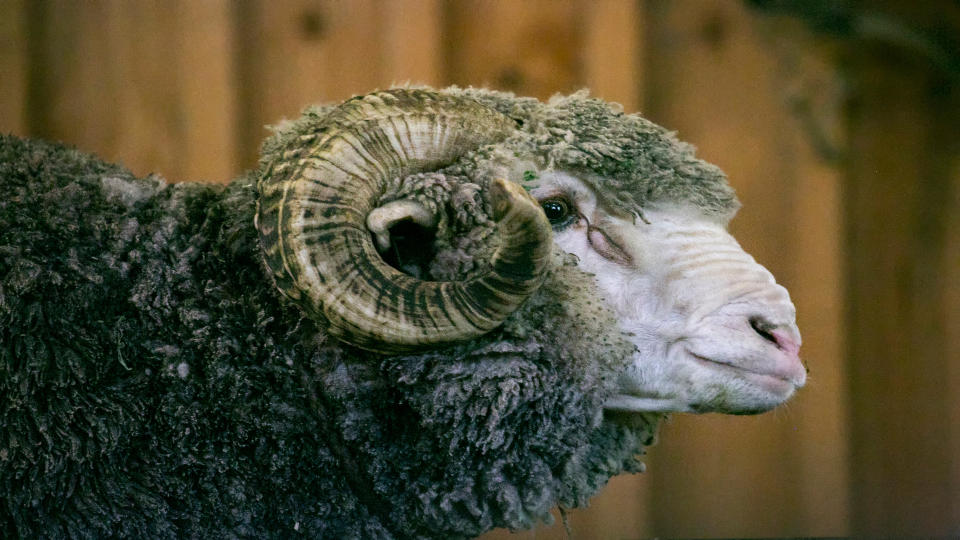6 misconceptions about wool in your outdoor gear – busted

If you’re planning on spending more time outdoors this year, be it on the trail in hiking boots, in a tent or on the ski slopes, you’ve probably heard about the wonders of wool. To your mate Dave, wool is a miraculous natural fabric that keeps you warm in the cold, cool in the heat and never needs to be washed (he professes, while trying to get you to smell the hiking socks he’s been wearing for three months straight).
But can all these wild claims really be true? If your main experience with wool is an itchy, misshapen sweater your parents forced you to wear any time you went over to your Grandma’s for Thanksgiving, it’s hard to imagine donning a garment made of wool to go hiking or skiing – but then again, all these hikers and skiers can’t be wrong, can they?
Speaking purely for myself, I’m a huge proponent of wearing wool. My hiking socks, ski socks, thermal underwear and base layers are all made from wool. Then there’s my beanie hat, my Patagonia Powder Town headband, my Fjallraven Keb jacket…the list goes on. It wasn’t always this way, however. Not 15 years ago I too would have avoided wool like the proverbial plague, recalling it as an itchy and weird-smelling relic of days gone by that only old people wear. But when I moved to the Rocky Mountains, I was quickly introduced to the benefits of wool and gifted a Smartwool base layer that became my trusted companion for all of my outdoor adventures.
As it turns out, I wasn't the only one who was confused about wool. There are lots of misconceptions about wool that probably prevent a lot of people from really enjoying the outdoors, so I recently caught up with Lorna Preston from UK-based outdoors outfit Trekitt, to dispel some of those misunderstandings that might be standing between you and a dry, warm day on a cold, windy mountain.

1. Wool is itchy
Obviously, the itch factor is the first thing many of us think of when we hear the word wool, and it’s not a myth – your 1982 Christmas sweater really was itchy. However, Preston explains that not all wool is itchy.
“Not all wool is created equal. Wool's texture varies greatly depending on the breed of sheep it's sourced from as well as the animals’ living conditions and care,” she explains.
For example, high-quality merino wool, like that produced in New Zealand, is ultra-fine and soft and feels a lot like cotton – making it ideal for base layers. So, why not just wear cotton?
“These base layers offer lots of qualities cotton equivalents can't, such as effective moisture-management, odor-resistance and warmth, even when wet.”
So the first step in choosing a non-itchy wool garment is to seek out a higher quality brand, like merino or Nuyarn, and consider shopping in 3D, where you can actually feel the garment you’re considering buying.

2. Wool is expensive
This one, you probably think, can’t possibly be a misconception. Wool is much more labor intensive to produce and relies on limited resources; synthetic materials like nylon and polyester can be produced in factories in seemingly unlimited quantities.
While a quick glance at the list of base layers we’ve tested reveals that some of the wool-based tops are among the more expensive, you can still find affordable options like the EDZ Merino Base-Layer and you can still part with a decent chunk of cash for a high-end synthetic top like the Paramo Grid Technic which is made using polyester.
However, as Preston explains, that sticker shock you might feel when you look at the price tag on the Artilect W-Flatiron 185 Crew also reflects its quality, and durability – if you take care of it anyway.
“High-quality merino or lambs wool items may initially seem costly, but they will last for years if properly taken care of. At Trekitt we are firm believers in buying once and buying well – especially for items like base layers, which are essential for a wide range of outdoor activities and worth investing in.”
She further points out that, because wool doesn’t get as stinky as your fleece top will, it doesn't require frequent washing, which means it lasts longer, saving you money on maintenance as well as cutting down on how often you need to replace items.

3. Wool performs poorly when wet
I’ll be honest, I had no idea that this was even was a misconception about wool, but Preston explains that this is an outdated idea based on that 1982 Christmas jumper and definitely doesn’t apply to the thermal underwear you’re eyeing up.
“The belief that wool performs poorly when wet originates from older wool garments that could shrink or become misshapen, but in reality one of wool’s main benefits is that it will continue to offer effective heat retention when it gets wet.”
Though in an ideal world, you’d be wearing a waterproof jacket over your wool base layer, Preston explains that wool can absorb up to 30 percent of its weight in moisture before it starts to feel wet and its natural crimped structure allows wet fibers to lean against each other, preserving pockets of warm air if you do get soaked.
“Some historical uses involved intentionally getting wool sweaters wet and letting them freeze to create a windproof barrier,” reveals Preston.
If you’re not convinced, come to Scotland and take a look at all the sheep standing out in a driving wind and a howling gale looking perfectly pleased with themselves.

4. Wool isn’t durable
It’s definitely possible that your resistance to wearing wool comes from an expensive base layer you bought six months ago that’s already showing signs of wear and tear and I get it – I’ve owned that same top. However, Preston says that compared to other natural fibers, wool is surprisingly durable.
“Its fibers can be bent back and forth 20,000 times before breaking, compared to cotton's 3,000 times. Wool fibers are also naturally stretchy and can be stretched 50 percent further than their original length when wet and 30 percent when dry.”
So wool is stronger than cotton, but not as strong as synthetic fibers, however as it turns out, you don’t actually have to choose between the two.
“The key to how durable a wool product is lies in its construction – particularly the style of knit and the material it’s blended with,” says Preston.
“Some brands, like Darn Tough, make products primarily from wool with added materials like nylon and Lycra to improve durability.”
Speaking of, I rarely venture out (or stay in, for that matter) without my Darn Tough Hiker Boot Midweight socks which are made with a blend of merino wool, nylon and elastane and have lasted me for nearly 10 years.

5. Wool is high maintenance
Let’s be honest, when you get home from a sweaty trail run, you probably just want to chuck your clothes in the washing machine, fling them in the dryer and have them clean and dry for your next adventure. Wool, on the other hand, speaks of dry cleaning and hand washing, not something many of us have the time or inclination to do, myself included.
Preston says that although wool garments are best washed by hand or using a wool-specific cycle in your washing machine, what makes them easy to maintain is that they rarely require washing at all.
“Wool is naturally antimicrobial, meaning it resists the growth of bacteria that cause odors. Even after extended wear during a multi-day adventure, wool garments will still feel fresh.”
I’m not saying you should sniff your friend Dave’s sock, but trust me on this – I wash my hiking socks every few months at best and they really don’t stink.
For wool sweaters or outer garments that don’t sit next to your skin (and sweat), Preston recommends just airing them out rather than washing them to help keep them in peak condition for longer.

6. Wool shrinks
Nothing is worse than finding the perfect, buttery soft base layer to keep you warm on your adventures only to finally give it a wash and find it’s now perfect for your four-year-old. While hardy polyester won’t ever shrink in the wash, wool does have a bit of a reputation for shrinking – but whether it does is down to how you treat it.
“Modern wool products are designed to minimize this risk. The potential for shrinkage largely depends on the quality of the wool and the care instructions followed.”
Read our article on how to wash merino wool gear. Follow the care labels on your clothing, use a gentle cycle on the washing machine, and avoid excessive heat to help preserve the size and shape of wool garments, says Preston.
“Our top tip is to avoid washing them as much as you can and if you do have to, opt for lower temperatures and avoid fast spin cycles.”

